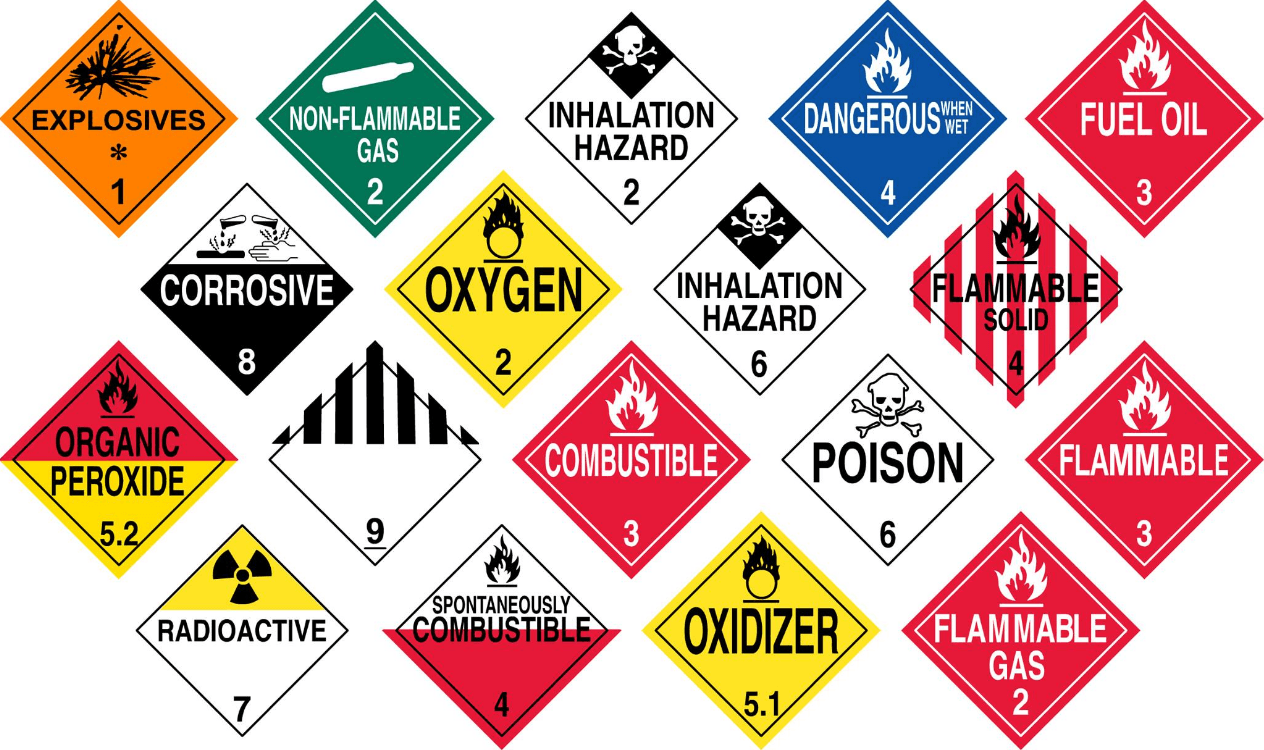To placard, or not to placard, that is the question. While it’s a general truth that each person who offers for transportation or transports any hazardous material must comply with applicable placarding requirements, fortunately there are many instances when placarding a shipment of hazardous materials is not required by the U.S. Department of Transportation’s (DOT) hazardous material regulations (HMRs).
Standard exceptions
These are exceptions with which transporters may already be familiar and may even be using. Placarding requirements do not apply to:
- Small quantities of certain hazard classes packaged in accordance with the small, excepted, or de minimis exceptions found at, respectively, 49 CFR 173.4, 49 CFR 173.4a, and 49 CFR 173.49
- Limited quantities (in combination packagings of 66 pounds (lb) or less that display the limited quantity mark)
- Materials of trade exception at 49 CFR 173.6
- Infectious substances
- Other regulated material (ORM-D) (e.g., consumer commodities)
- Combustible liquids in nonbulk packagings
- Hazardous materials hermetically sealed in packaging prepared in accordance with 49 CFR 173.13 (applies to specified hazard classes that are not toxic inhalation hazards)
A question of weight
Transporters may not be as familiar with the exceptions found in the general placarding requirements at 49 CFR 172.504, which require that a transport vehicle containing any quantity of hazardous material be placarded on each side and end with the placards as specified for all hazard classes/divisions.
This regulation, however, also provides several placarding exceptions based on the weight of a shipment of materials.
Exception for shipments less than 1,001 pounds:
For example, 49 CFR 172.504(c) allows an exception from the placarding requirements for shipments by highway or rail that contain less than 1,001 pounds aggregate gross weight (i.e., the total weight of all hazardous materials and their packagings loaded on a single transport vehicle).
What if the shipment was cylinders of compressed acetylene gas, a Division 2.1 (flammable) material with the identification number UN 1001 that is listed on Table 2 of 49 CFR 172.504? As long as the cylinders of acetylene and any other Table 2 materials being transported with the acetylene weighed no more than 1,000 pounds, the transport vehicle would not need to be placarded.
Enjoying our insights?
Subscribe to our newsletter to keep up with the latest industry trends and developments.
Stay InformedHowever, placards would be required when the aggregate gross weight is 1,001 pounds or more. For example, if 700 pounds of Hazard Division 2.1 (flammable gas) and 200 pounds of another material specified in Table 2 of 49 CFR 172.504 – let’s say Class 8 (corrosive material) – are being transported, no placard would be required. But, if the weight of either of these two materials brought the shipment’s aggregate gross weight to 1,001 pounds or more, the vehicle would have to be placarded for both the Class 2.1 and the Class 8 materials.
Dangerous placard:
Perhaps not a true placard exception, but one that is very useful, is the exception at 49 CFR 172.504(b) that allows a transport vehicle loaded with non-bulk packages of two or more categories of hazardous materials that require Table 2 placards, to be placarded with a “Dangerous” placard instead of the placards that would otherwise apply to transport of the hazardous materials.
However, weight is a factor here, too, because when 2,205 pounds or more of a single category of hazardous material is to be transported, the placard specified in for that material must be displayed.
Added benefits
If a hazardous material is exempt from placarding, it’s usually the case that other exemptions from the HMR also apply. Most of the standard exceptions listed here also exempt the hazardous material from one or more of the HMR requirements concerning marking, labeling, shipping papers, training, and segregation requirements. And shipments who don’t require placarding don’t require that the person who offers for transportation, or transports, hazardous material be registered in accordance with 49 CFR 107.601 or prepare a security plan as provided for in 49 CFR 172, Subpart I.



















You did not mention the Class 9 exception.